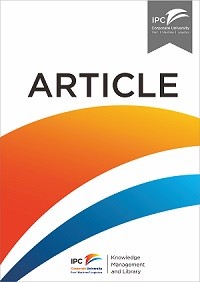Article
Changing concentration ratios and geographical patterns of bulk ports: the case of the Korean west coast
Contrary to liner shipping, common shipping network patterns are difficult to organize in tramp shipping as origin and destination ports are irregular and they may change based on shippers’ demands. Unlike liner shipping whereas the choice of ports is strongly related to their geographical locations among other factors and a topic of much research in the contemporary literature, the geographical issues related to bulk ports are an interesting yet currently under-researched topic. For this reason, this study aims to analyze the concentration ratios of bulk ports to reveal geographical patterns, using the case of bulk ports along the west coast of Korea including, Incheon Port (ICP), Pyeongtaek-Dangjin Port (PDP), and Gunsan Port (GSP). To examine and shed more light to the above mentioned research issue, this paper adopts a series of methods, such as Hirshmann-Herfindahl Index (HHI), Location Quotients (LQ), and Shift Effects (SE). Results from the HHI analysis, indicated that de-concentration has been gradually rising because of a considerable overlapping of ports’ functions. Meanwhile, the LQs’ confirmed this result. Finally, the SE’ results effectively showed that a substantial shifting of cargo had occurred among the ports.
Ketersediaan
Informasi Detail
- Judul Seri
-
The asian journal of shipping and logistic
- No. Panggil
-
ATC PO LEE c
- Penerbit
- Amsterdam : Elsevier B.V., 2014
- Deskripsi Fisik
-
19 p.
- Bahasa
-
English
- ISBN/ISSN
-
-
- Klasifikasi
-
PO
- Tipe Isi
-
-
- Tipe Media
-
-
- Tipe Pembawa
-
online resource
- Edisi
-
Volume 30 number 2 August 2014
- Subjek
- Info Detail Spesifik
-
-
- Pernyataan Tanggungjawab
-
LEE, Taehwee
Versi lain/terkait
Lampiran Berkas
Komentar
Anda harus masuk sebelum memberikan komentar

 Karya Umum
Karya Umum  Filsafat
Filsafat  Agama
Agama  Ilmu-ilmu Sosial
Ilmu-ilmu Sosial  Bahasa
Bahasa  Ilmu-ilmu Murni
Ilmu-ilmu Murni  Ilmu-ilmu Terapan
Ilmu-ilmu Terapan  Kesenian, Hiburan, dan Olahraga
Kesenian, Hiburan, dan Olahraga  Kesusastraan
Kesusastraan  Geografi dan Sejarah
Geografi dan Sejarah